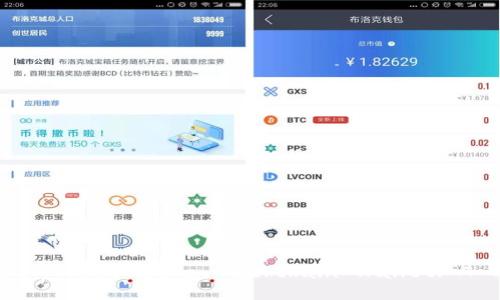Title:How to Effectively Operate a Blockchain Wallet: A Comp
Blockchain wallets are essential tools for anyone interested in cryptocurrencies. They serve as the digital equivalent of a physical wallet, allowing users to store, send, and receive various cryptocurrencies such as Bitcoin, Ethereum, and countless altcoins. This guide aims to provide a comprehensive overview of how blockchain wallets operate and the various aspects that users need to consider for effective management.
In this guide, we will delve into the types of blockchain wallets, security measures, the importance of user experience, and strategies for successful operation. Whether you're a beginner or a seasoned cryptocurrency user, understanding the intricacies of blockchain wallets is crucial for ensuring your assets' safety and maximizing your benefits in the crypto space.
## What is a Blockchain Wallet? ### Definition and FunctionalityA blockchain wallet is software that allows users to interact with the blockchain. Unlike traditional wallets that hold physical currency, blockchain wallets store digital keys, which are used to access and transact in cryptocurrencies. The wallet does not store actual coins; instead, it maintains a record of transactions on the blockchain.
When a user sends cryptocurrency, their wallet signs the transaction using their private key, thereby authorizing the transfer of ownership. The transaction is then broadcasted to the network and, once verified, is recorded on the blockchain, ensuring transparency and security.
## Types of Blockchain Wallets ### 1. Hot WalletsHot wallets are connected to the internet and are typically used for everyday transactions. They are convenient for quick access and low-fee transactions but come with heightened security risks.
### 2. Cold WalletsCold wallets are not connected to the internet, making them much more secure against hacks. They are best suited for long-term storage of assets. Examples include hardware wallets and paper wallets.
### 3. Mobile WalletsMobile wallets are applications designed for smartphones, allowing users to manage their cryptocurrencies on-the-go. They are user-friendly but depend on the security of the device they are installed on.
### 4. Desktop WalletsDesktop wallets are downloaded and installed on a personal computer. They offer more security than mobile wallets but are at risk if the computer is compromised.
### 5. Web WalletsWeb wallets are hosted online and can be accessed from any device with an internet connection. While they are convenient, they are also vulnerable to attacks.
## Wallet Security Measures ### Understanding Security RisksAs with any digital asset, security is paramount when dealing with blockchain wallets. Users must be aware of common threats such as phishing attacks, malware, and hacking attempts. Implementing robust security measures is essential for protecting one’s digital wealth.
### Best Practices for Security1. **Use Two-Factor Authentication (2FA)**: Adding an extra layer of security makes it harder for unauthorized access.
2. **Keep Software Updated**: Regularly updating wallet software ensures that users benefit from the latest security patches.
3. **Be Wary of Phishing**: Always verify the URLs and email addresses of services and be cautious about unsolicited messages.
4. **Back Up Your Wallet**: Regular backups ensure that users can recover their wallets in case of loss or failure. Store backup keys in a secure place, preferably offline.
5. **Use Strong Passwords**: A strong, unique password is the first line of defense against unauthorized access.
6. **Consider Multi-Signature Wallets**: Multi-signature wallets require multiple private keys to authorize a transaction, increasing security.
## User Experience in Blockchain Wallets ### Importance of User-Friendly InterfacesFor mass adoption, blockchain wallets must have an interface that is intuitive and easy to navigate. A confusing user interface can deter potential users from engaging with cryptocurrency.
### Key Features Enhancing User Experience1. **Easy Navigation**: A straightforward flow for transactions helps users avoid errors.
2. **Clear Instructions**: Providing users with clear instructions and guidance can significantly improve usability.
3. **Responsive Design**: Ensuring the wallet is accessible on various devices and screen sizes improves accessibility.
4. **Consistent Updates**: Regular updates to the app can fix bugs and improve user experience.
## Operative Strategies for Blockchain Wallets ### Managing Wallets EffectivelyOperating a blockchain wallet requires not just technical knowledge but also strategic planning. Here are some effective strategies:
### 1. Diversification of AssetsUsers should consider diversifying their cryptocurrency portfolio to mitigate risks associated with market volatility.
### 2. Regular MonitoringRegularly checking wallet balances and transaction histories can help users keep track of their holdings and quickly respond to any suspicious activity.
### 3. Engaging with the CommunityJoining community forums and discussions about blockchain and cryptocurrencies can provide users with valuable insights and updates.
### 4. Utilizing Analytics ToolsEmploying tools to analyze market trends and wallet performance can enhance decision-making related to asset management.
## Related Questions and Detailed Answers ### How do I choose the right blockchain wallet?Choosing the right blockchain wallet depends on several factors, including security concerns, ease of use, and the types of cryptocurrencies you intend to hold. Users should evaluate their needs and preferences, such as whether they prioritize security over convenience. For beginners, a mobile or web wallet might be suitable for its convenience, while more experienced users might prefer a hardware wallet for enhanced security. It’s essential to research each wallet's features and community reputation before making a decision.
### What are the risks associated with using blockchain wallets?Using blockchain wallets comes with inherent risks, such as exposure to scams, phishing attacks, and hacking attempts. Users must remain vigilant and practice good security hygiene, such as employing strong passwords and enabling two-factor authentication. The decentralized nature of cryptocurrencies means that recovery options are often limited, making it crucial to follow security best practices to protect one's assets effectively.
### How can I recover a lost blockchain wallet?If a user loses access to their blockchain wallet, recovery can depend on whether they took precautionary measures, such as backing up their recovery phrase or private keys. Most wallets provide a seed phrase during setup that enables recovery in case of loss. However, if these recovery options are not available, it could be impossible to regain access, highlighting the importance of securing necessary information safely.
### What should I do if I notice suspicious activity in my wallet?Upon noticing any suspicious activity, the user should take immediate action. First, changing the password associated with the wallet is critical. Next, enabling additional security features like two-factor authentication can prevent further unauthorized access. It’s also wise to transfer remaining funds to a new wallet and inform the service provider if using web wallets to investigate the issue.
### How often should I update my blockchain wallet?Wallets, especially software wallets, should be updated regularly to benefit from new features and security patches. Users should check for updates at least monthly, but more frequent checks are advisable, especially when new vulnerabilities are discovered. Additionally, subscribing to relevant newsletters or following wallet providers on social media can help users stay informed about updates.
### Can I use multiple wallets simultaneously?Yes, many users operate multiple wallets to manage different cryptocurrencies or for varying levels of security. Some may use a hot wallet for daily transactions and a cold wallet for long-term storage. This strategy allows users to balance convenience and security effectively. However, managing multiple wallets should be done with careful record-keeping to avoid losing track of private keys and recovery phrases.
## ConclusionOperating a blockchain wallet requires a blend of technical knowledge and strategic foresight. Users must prioritize security, user experience, and effective management to make the most of their cryptocurrency holdings. By understanding the types of wallets available, implementing best practices for security, and engaging with the broader community, users can navigate the complex world of cryptocurrency with confidence.
As the cryptocurrency landscape continues to evolve, staying informed and adaptable will be key for all wallet users. By following the guidelines provided in this comprehensive guide, users can ensure they are equipped to handle their blockchain wallets with ease, security, and effectiveness.





